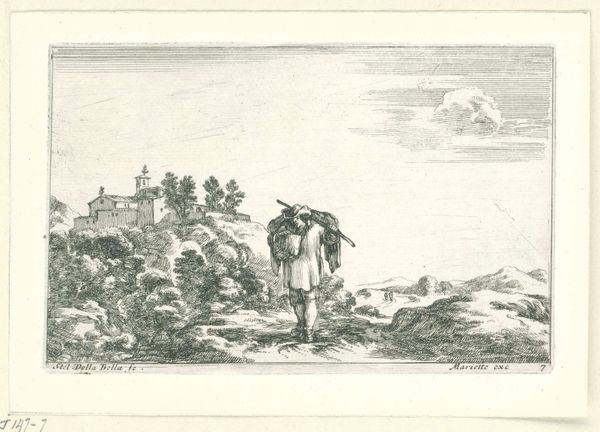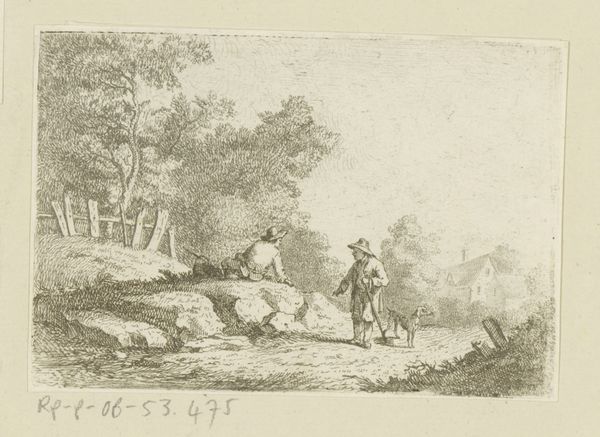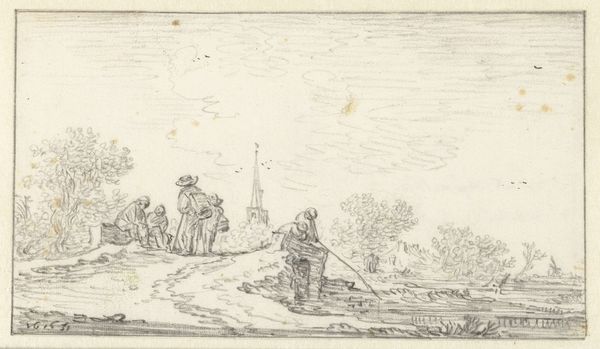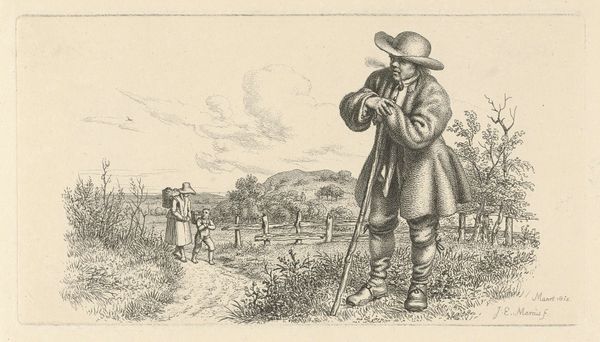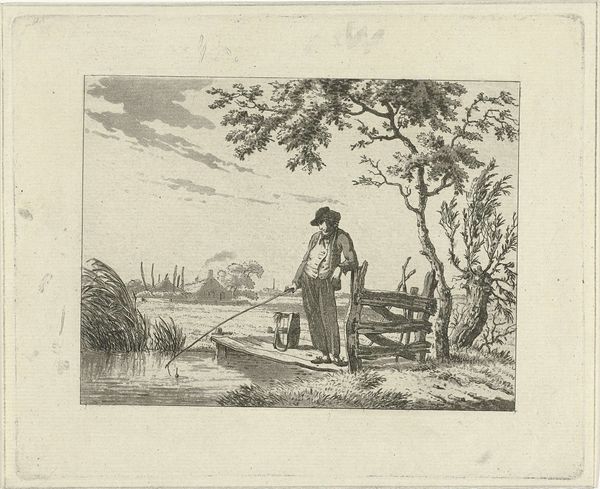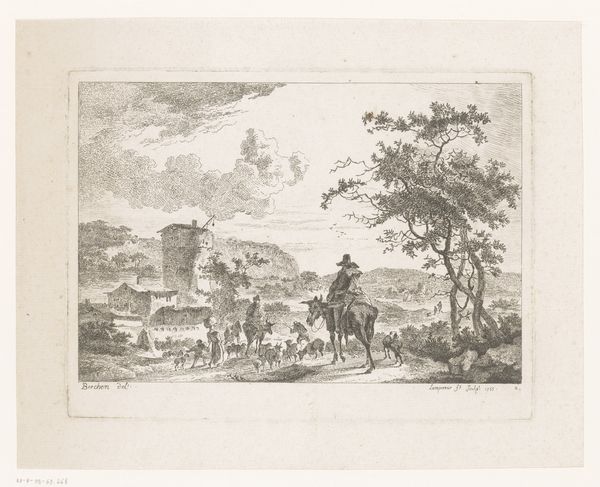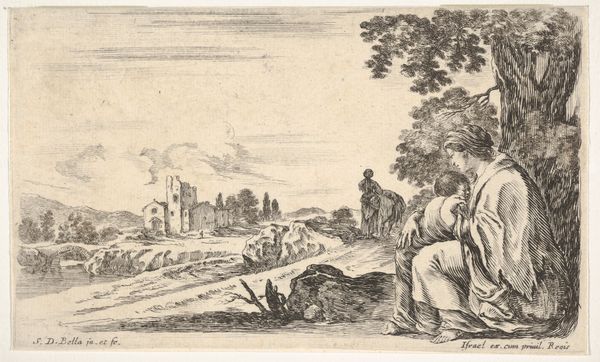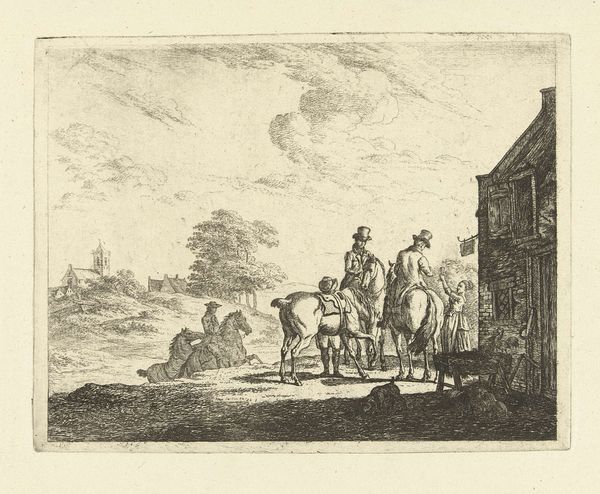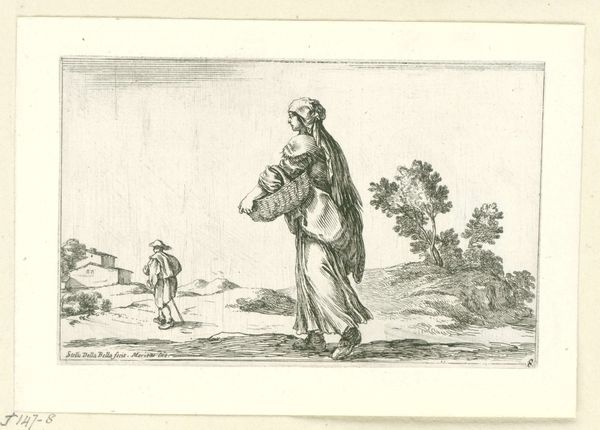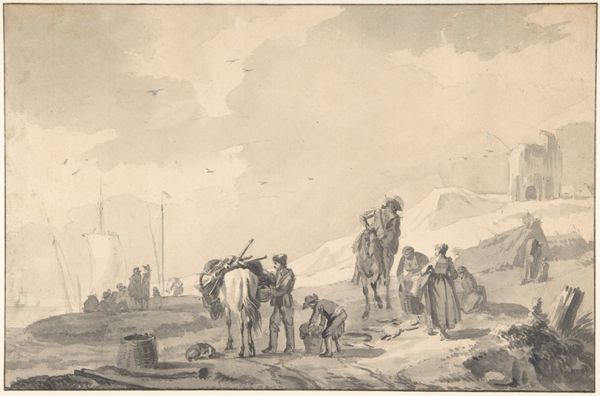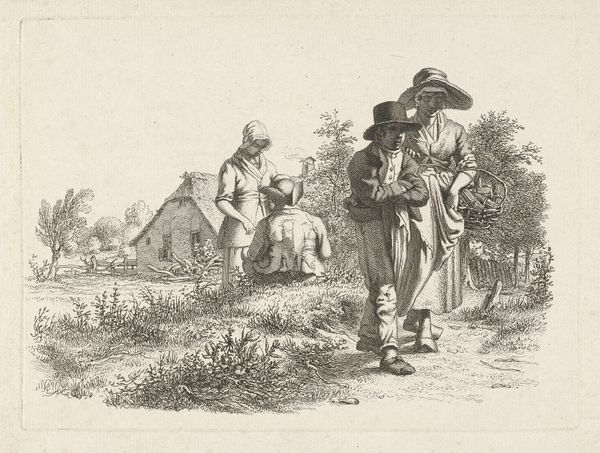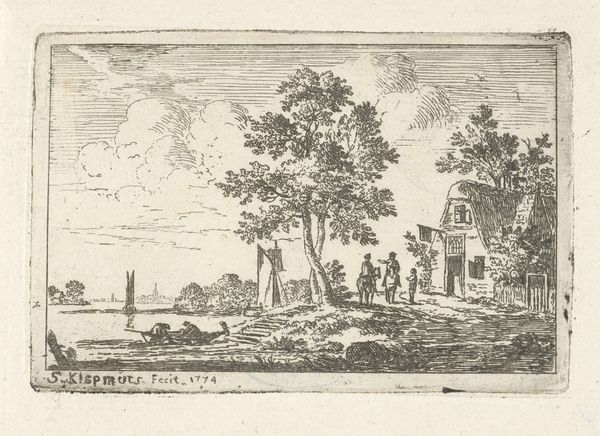
drawing, print, etching, ink
#
portrait
#
drawing
#
aged paper
#
baroque
#
pen drawing
#
mechanical pen drawing
# print
#
pen illustration
#
pen sketch
#
etching
#
old engraving style
#
landscape
#
figuration
#
personal sketchbook
#
ink
#
pen-ink sketch
#
pen work
#
sketchbook drawing
#
italian-renaissance
Dimensions: height 94 mm, width 140 mm
Copyright: Rijks Museum: Open Domain
Curator: Here we have "Man leaning on a stick in a landscape," an etching by Stefano della Bella, created sometime between 1620 and 1664. Editor: It feels like a fleeting thought captured in ink. There’s a traveler, his back to us, gazing out over a vista. It’s stark, but… hopeful, somehow. Curator: Let’s consider the process. Della Bella, known for his exquisite draftsmanship, likely used a metal plate, applying a wax ground and then carefully etching the lines with a needle. This particular print gives insight into 17th century printing practices, it's an early example of mass reproduction techniques and distribution of visual art. Editor: It’s more than just the how, though, isn’t it? Look at the way the landscape unfolds, so delicate, the subtle play of light and shadow with just the fine etched line work. He's masterfully constructed this image of traveler to represent the freedom and reflection found in the journey, which becomes tangible with just a bit of ink. Curator: The landscape wasn't merely scenery, though. Think about land ownership at that time, the social hierarchies embedded in those estates. Della Bella created prints for the aristocratic class, for consumption within court circles. He himself benefitted directly from his connections to ruling families and court commissions. Editor: It’s fascinating how such detailed work could be disseminated as widely as prints allowed, which definitely democratizes the art! It makes you wonder who would buy it and what would be the motivation: simple admiration, the need for home decor, or aspirations to appear sophisticated? Curator: Well, these prints were commodities within a developing art market. Wealthier people purchased sets of prints bound into albums to demonstrate their sophistication. But considering paper costs, access, and literacy levels during this era, it is very improbable this kind of art form ever became truly democratic. Editor: I see your point. It all adds to the image; it deepens the narrative the artwork presents, making that traveler’s quiet observation even more powerful. Thank you. Curator: Indeed, the journey for understanding never truly ends.
Comments
No comments
Be the first to comment and join the conversation on the ultimate creative platform.
